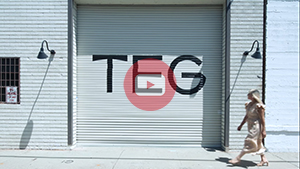Back-to-School Needs Jump-Start to Avoid Deep Promotions
Many retailers cleared out their Spring inventory with big sales during the Fourth of July weekend, but they’re not going to be able to take much of a break from the hustle of doing promotions, according to Marshal Cohen, chief industry analyst for market-research company The NPD Group.
“If Back-to-School doesn’t get an early start, it will turn very promotional,” Cohen said. “Look for sales starting in August at 25 percent [off] on almost everything—and, in some areas, promotions even deeper than that on Summer merchandise.”
Sales and markdowns are a traditional part of retail, but post Great Recession, they just seem to be getting bigger. From May 2010 to May 2011, 56 percent of all apparel in the United States was sold in promotion or a sale, according to The NPD Group. That figure marks a slight increase from the 12 months preceding it, when 54 percent of all apparel was sold in a sale or promotion.
It may be hard to top jaw-dropping promotions of the past few years, according to Jeff Van Sinderen, a retail analyst with B.Riley & Co., a Los Angeles–based financial-services company.
“Once you go to 70 percent off of the store, what do you do for an encore?” he said. “It’s hard to go to 80 percent off.”
Many retailers produced sales that seemingly stopped short of 70 percent recently. In June, Gap stores offered more than 60 percent off of items in their summer sales. At Abercrombie & Fitch stores, some items were marked 50 percent off during the Redlines sales, which will continue until #8232;July 26, according to analyst Adrienne Tennant of Janney Capital Markets.
Promotion fever also hit outlet malls. Outlet retailers typically offer discounts of 30 percent to 70 percent off retail prices. At the Citadel Outlets, near downtown Los Angeles, most tenants offered 30 percent off retail prices for much of this year. However, during the July Fourth weekend sales, retailers were offering 40 percent to 50 percent off all merchandise in the entire store—promotions characteristic of Black Friday sales, which kick off the crucial Christmas sales season, according to Traci Markel, marketing director for Citadel Outlets. However, consumers want more than bargain-basement prices—even in a promotional market, Markel said. “They want a trusted name, quality. They want value,” she said.
Some retail consultants and analysts have been counseling people to scale back the discounts. The NPD Group’s Cohen recommended retailers go on a “discount detox” by offering fewer discounts or setting the discounts lower.
Boutique chain M.Fredric has gone cold turkey from sales.
In June, the Agoura Hills, Calif.–based retailer reversed a 2-year-old policy of producing various ongoing sales at its five full-price locations. Now, the retailer will produce just one week-long sale at the end of a season, said M.Fredric co-owner Fred Levine.
“We’ve come to the realization that this approach has not really been effective since any increase in sales volume is offset by the decrease in profit margin,” Levine said. It also was too hard to compete against department store and specialty chain-store sales. Since stopping promotions, same-store sales have increased 22 percent in the past month, Levine said.
Levine hopes to convince consumers to pay full price by consistently offering unique fashions with a “must-have” cachet. Since M.Fredric instituted the new policy, its buyers have doubled their time shopping at trade events and searching showrooms to find new, compelling product.
Offering new and unique product will remain one of the strongest advantages for independent retailers, according to Jeff Harbaugh of Seattle-based Jeff Harbaugh & Associates, a consultancy focusing on action-sports business. If a retailer cannot compete on price against a big competitor, such as Pacific Sunwear, the store can compete on novelty and new styles. Harbaugh conceded that trying new brands is a risk but added, “I see not using new brands as a bigger risk.”
A way to cut down on risk is to manage inventory closely, focusing on gross-margin dollars earned, not sales. Learn when to order, when to not order and when to mark down. “Every retail business has markdowns,” Harbaugh said. “There is a lot of money on the table if you minimize them.”
Harbaugh and Van Sinderen said store owners should sell a smaller volume of units at higher dollars per unit. Leaner inventories create a degree of scarcity, so consumers will not be able to wait for the product to go on sale. “If there is not a lot of inventory on sale, [the consumer must] buy it early and pay for it,” Harbaugh said.
The apparel industry also will continue to be aware of increasing prices of cotton and labor, which have pushed up costs of making clothes, making it tougher to run a promotion without eating into somebody’s profits, according to Lynne Sperling of retail consultancy The Sperling & Hileman Group. “[Costs] will be passed on to the consumer or be absorbed by the manufacturer,” Sperling said of some market situations. But sales and promotions will continue to be a fact of business. Sperling forecast that retailers will shuffle their merchandising mixes this season so they can afford loss leaders and still make their margins with other products.






















